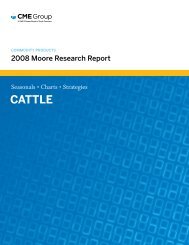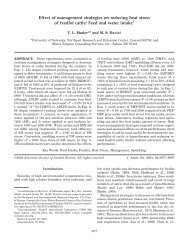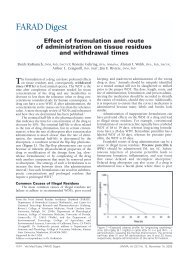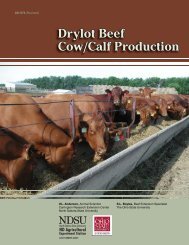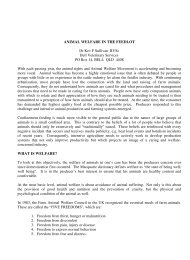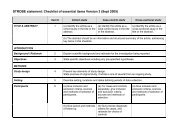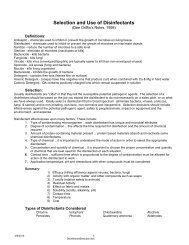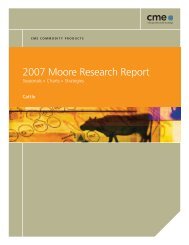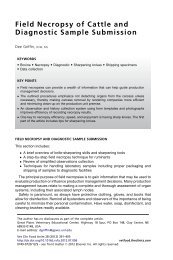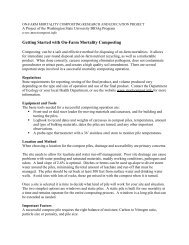CRIMES WITHOUT CONSEQUENCES - gpvec
CRIMES WITHOUT CONSEQUENCES - gpvec
CRIMES WITHOUT CONSEQUENCES - gpvec
Create successful ePaper yourself
Turn your PDF publications into a flip-book with our unique Google optimized e-Paper software.
enforCement of federal laW in u.s. Plants<br />
1,000 animals slaughtered that year, or less than an hour per shift per federal<br />
slaughterhouse. 163 The FSIS has implemented a Humane Activities Tracking system to<br />
monitor the amount of time spent by FSIS inspection personnel on overseeing humane<br />
handling and slaughter. However, inadequate monitoring of humane practices is only<br />
one weakness of the current enforcement system. Of equal concern is the lack of action<br />
taken on observed violations.<br />
Failure to take appropriate action<br />
There were many instances where FSIS failure to take proper enforcement action, by<br />
issuance of a Suspension of Inspection, resulted in reoccurrence of the noncompliance<br />
and additional—and unnecessary—animal suffering. Following are some examples:<br />
<br />
<br />
<br />
<br />
<br />
On November 4, 2002, inspection personnel at plant #19546 observed stillconscious<br />
animals being cut at 0750, 0853, 0948, 1057, 1117, 1127, 1138, 1142,<br />
1333, 1334 and 1355 hours. The inspector citing the noncompliance noted that<br />
previous stunning deficiencies had been noted at the plant on at least four other<br />
occasions. On November 6, 2002, inspectors again observed conscious animals<br />
being butchered at 0745, 0750, 0844, 0847, and 1106 hours. On December 4,<br />
2002, inspectors noted that animals were improperly stunned before bleeding at<br />
0730, 0825, and 1003 hours.<br />
On December 30, 2002, inspection personnel at plant #21799 saw two hogs<br />
struggling and kicking in the scald tank. On December 31, 2002, inspectors again<br />
observed conscious hogs in the scald tank.<br />
On March 17, 2003, inspection personnel at plant #2594 observed a hog who<br />
broke his leg because of a hole in the floor of a weight scale. On March 21, 2003,<br />
inspectors observed another hog with a badly cut leg due to loose boards at the<br />
base of the damaged scale.<br />
On May 10, 2003, inspection personnel at plant #717 observed that some hogs<br />
appeared to be conscious after being stunned. On May 12, 2003, inspectors<br />
observed conscious hogs thrashing in the scalding tank.<br />
On October 3, 2003, inspection personnel at plant #4470 issued an NR to<br />
plant for unloading three disabled animals in a field and not protecting them<br />
from adverse weather conditions and not providing them with water and feed.<br />
On October 23, 2003, a plant was cited for unloading disabled animals in an<br />
inhumane manner.<br />
Inconsistent actions by District Offices<br />
Among the most significant findings of this study is the inconsistency in humane<br />
slaughter enforcement by FSIS district offices. Table 18 shows the number of NRs and<br />
suspensions by district. While the humaneness of animal handling and slaughter may vary<br />
somewhat by district, it is unlikely that this alone can explain the observed differences in<br />
163 Full coverage of humane monitoring at all federal “large” slaughter plants and minimal to moderate coverage<br />
at all small and very small plants would require 400,000 to 500,000 inspector hours per year.<br />
55




